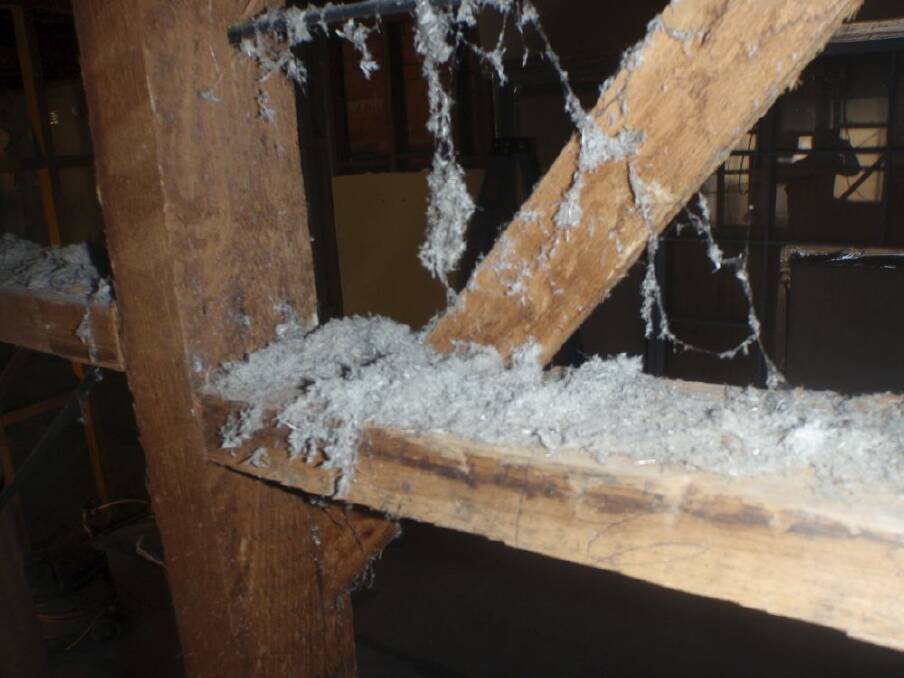Asbestos wizard of oz serves as a fascinating gateway into the intricate web woven between classic cinema and the hidden perils of asbestos exposure. This beloved film, while enchanting audiences with its whimsical characters and magical landscape, harbours a darker narrative tied to the historical use of asbestos during its production. As we delve into the film’s context, we uncover the health risks associated with asbestos and explore how the characters can be seen as metaphors for these dangers, sparking a discussion that is both enlightening and urgent.
In the vibrant tapestry of The Wizard of Oz, the spectre of asbestos looms, inviting us to reconsider the implications of its incorporation in the film industry. As we examine the public perception shaped by this cinematic masterpiece, we will discover how its enduring legacy influences contemporary asbestos awareness and safety practices within the film realm. Through a blend of artistic interpretations and critical analysis, we shall unveil the multifaceted connections between this iconic film and the pressing issues of asbestos exposure.
The Connection Between Asbestos and The Wizard of Oz: Asbestos Wizard Of Oz

The 1939 film “The Wizard of Oz” remains a cultural touchstone, beloved for its enchanting story and vibrant imagery. However, the historical context of its production reveals a darker side, particularly with the widespread use of asbestos during the time. Asbestos, a mineral known for its fire-resistant properties, was a common material in various industries, including film production, where it was often utilized for costumes, set designs, and special effects. This connection not only highlights the era’s ignorance of health risks but also mirrors some of the film’s profound themes.
The dangers associated with asbestos exposure have been well-documented, with serious health implications such as asbestosis, lung cancer, and mesothelioma emerging long after its popular use. The risks can be seen as a metaphor for the struggles faced by the characters in “The Wizard of Oz.” Just as Dorothy seeks a way home amidst the perils of the fantastical land of Oz, the real-world implications of asbestos serve as a reminder of the hidden dangers lurking beneath the surface of seemingly innocent surroundings.
Health Risks Related to Asbestos Exposure
The health risks associated with asbestos are critical to understanding the broader implications of its use during the time of “The Wizard of Oz.” The dangers of this material were not fully understood in the 1930s, leading to widespread exposure among both production crews and the actors. The following points Artikel the significant health risks posed by asbestos:
- Asbestosis: A chronic lung disease caused by the inhalation of asbestos fibres, leading to scarring of lung tissue and difficulty breathing.
- Lung Cancer: Prolonged exposure to asbestos increases the risk of developing lung cancer, particularly among smokers.
- Mesothelioma: A rare but aggressive cancer primarily linked to asbestos exposure, affecting the lining of the lungs and abdomen.
- Other Cancers: Studies have shown associations between asbestos exposure and cancers of the larynx, ovary, and gastrointestinal tract.
This multitude of health risks reflects the themes of fear and danger present in the film. Just as Dorothy encounters various threats throughout her journey, individuals exposed to asbestos unknowingly face life-altering consequences, symbolizing the need for awareness and caution in the face of hidden dangers.
Symbolism of Characters in The Wizard of Oz
In “The Wizard of Oz,” each character embodies distinct traits and qualities that serve as powerful metaphors for the dangers associated with asbestos. The following character interpretations illustrate the connections between their journeys and the risks of asbestos exposure:
- Dorothy: Represents the quest for safety and understanding, mirroring the struggle for awareness regarding asbestos-related health issues.
- The Scarecrow: Symbolises the lack of knowledge about the dangers of asbestos, as he seeks a brain to comprehend the hazards lurking within ordinary environments.
- The Tin Man: Depicts the heartache caused by asbestos-related health afflictions, as he longs for a heart to feel the pain of those affected.
- The Cowardly Lion: Embodies the fear and anxiety individuals may face when confronting the realities of asbestos exposure and its consequences.
Through these characters, “The Wizard of Oz” presents a narrative that resonates with the real-world implications of asbestos, urging viewers to recognise the importance of vigilance and education regarding health risks. The film’s timeless themes draw parallels with the ongoing conversation about safety and health, emphasising the necessity of awareness in an often-overlooked aspect of history.
The Impact of The Wizard of Oz on Public Perception of Asbestos
The Wizard of Oz, a timeless film that captured the hearts of audiences since its release in 1939, also inadvertently shaped public perceptions surrounding various societal issues, including environmental health concerns such as asbestos exposure. The film’s fantastical narrative and vivid imagery may have contributed to a broader cultural understanding of dangers that lurk beneath the surface of seemingly idyllic environments, much like the hidden dangers of asbestos.
The intersection of popular culture and public awareness is significant, as films like The Wizard of Oz can disseminate messages that resonate with audiences, influencing their views on health hazards. While the film does not explicitly discuss asbestos, its themes of deception and the quest for truth can be paralleled with the hidden risks associated with asbestos in everyday life. The portrayal of the Emerald City, with its dazzling beauty masking the darker realities of the characters’ journeys, serves as an allegory for environments containing asbestos; they may appear safe but hold the potential for grave health consequences.
Cultural Reflections of Environmental Health
Popular culture plays a pivotal role in shaping perceptions of health risks, and The Wizard of Oz is no exception. The film’s narrative can be interpreted through a lens of environmental health, highlighting the following key points:
-
The path to Oz mirrors the journey of awareness regarding environmental hazards; characters face challenges that expose underlying dangers, akin to the struggle against the pervasive threat of asbestos.
- Emerging from a sepia-toned Kansas, the vibrant colours of Oz may represent the allure of urban development, often accompanied by the negligence of environmental health standards, including asbestos regulations.
- The character of the Wizard, initially perceived as a figure of authority, embodies the façade of safety that industries may project while neglecting the risks associated with materials like asbestos.
The legacy of The Wizard of Oz continues to resonate in contemporary asbestos awareness campaigns. The emotional resonance of the film’s narrative is leveraged to communicate the importance of recognising and addressing environmental hazards. Campaigns often employ similar storytelling techniques, using relatable characters and narratives to convey the serious health risks of asbestos exposure. With the rise of social media, these campaigns can reach wider audiences, echoing the film’s timeless messages of caution and awareness.
As society grapples with the implications of past choices regarding materials like asbestos, The Wizard of Oz remains a cultural touchstone, reminding us of the importance of looking beyond superficial appearances to uncover the truths that may lie beneath. By drawing on the film’s rich imagery and allegorical significance, advocates can engage the public, fostering a more informed and proactive approach to environmental health issues, particularly those linked to asbestos exposure.
Asbestos in the Film Industry

The Wizard of Oz, as a hallmark of cinematic history, stands at the crossroads of art and safety, particularly concerning the use of asbestos. While the enchanting tales of Dorothy and her companions captivated audiences, the methods employed during production raise significant considerations about safety practices in the film industry. The historical context surrounding asbestos use on set provides a stark contrast to today’s stringent health regulations, highlighting the evolution of material safety in film production.
Safety Practices During Production
During the production of The Wizard of Oz, standard safety practices surrounding asbestos were minimal, reflecting the era’s lack of awareness regarding the health risks associated with the material. Asbestos was commonly used in the film industry for its fire-resistant properties, particularly in set construction and special effects. For instance, the iconic tornado sequence employed asbestos-based materials to create the illusion of flying debris. Unfortunately, such practices went largely unregulated, leading to potentially hazardous environments for cast and crew alike.
Historical Use of Asbestos Compared to Contemporary Regulations
The historical reliance on asbestos in film sets has undergone a dramatic transformation in light of contemporary safety regulations. In the mid-20th century, the dangers of asbestos were not widely acknowledged, resulting in its extensive use. However, the latter part of the century ushered in a wave of legislation aimed at protecting workers from hazardous materials.
Current regulations now dictate strict guidelines on the use of hazardous substances in film production, with film sets required to conduct risk assessments and implement safety protocols, including:
- Regular inspections for hazardous materials
- Mandatory training on the handling of potentially harmful substances
- Development of emergency response plans in case of exposure
This shift underscores a commitment to safeguarding the health and safety of all personnel involved in film production.
Evolving Materials in Film Production, Asbestos wizard of oz
The film industry’s evolution regarding materials used in productions reflects an increasing awareness of health and environmental impacts. In the era of The Wizard of Oz, materials such as asbestos were chosen primarily for their utility, often with little regard for long-term health implications. In stark contrast, contemporary productions favour sustainable, non-toxic materials that do not compromise safety for aesthetics.
For example, modern films now often use fire-retardant fabrics that do not contain harmful substances, advanced CGI technology to create visually stunning effects without the need for hazardous materials, and eco-friendly construction methods for sets. This evolution not only prioritises the well-being of the cast and crew but also aligns with broader societal shifts towards sustainability and health consciousness.
The film industry has transitioned from hazardous practices to implementing comprehensive safety measures that prioritise the welfare of all involved.
Artistic Interpretations of Asbestos Themes in The Wizard of Oz

The intermingling of art and environmental issues has been a compelling avenue for exploration, particularly in the context of The Wizard of Oz. This iconic film has inspired various artists to delve into the themes surrounding asbestos, a material notorious for its health hazards. Through their interpretations, these artworks not only pay homage to the film but also serve as poignant reminders of the consequences of asbestos exposure, connecting the fantastical elements of Oz with the stark realities of industrial negligence.
Artworks inspired by The Wizard of Oz often embody a dual narrative that exposes both the whimsy of the film and the serious implications of asbestos. Artists have utilised visual mediums to juxtapose characters from the movie against the backdrop of asbestos-related themes, creating a dialogue between fantasy and a harsh reality. For instance, a series of paintings might feature Dorothy, clad in her iconic blue gingham dress, traversing a landscape dotted with warning signs about asbestos exposure. This stark contrast provokes thought about the innocence of childhood dreams amidst the perils of industrialisation.
Narratives Connecting Characters to Asbestos Exposure Consequences
Artistic interpretations frequently weave narratives that link the beloved characters of The Wizard of Oz to the dire consequences of asbestos exposure. These stories often draw parallels between the character’s journeys and the struggles faced by individuals affected by this hazardous material.
For example, the Scarecrow, often symbolising neglect and disregard, can be portrayed as a representation of those left vulnerable due to asbestos-related illnesses. His quest for a brain mirrors the search for knowledge and awareness about the dangers of asbestos. The Tin Man, seeking a heart, may symbolise the lack of empathy in industries that have historically overlooked health concerns for profit.
Through installations or performances, artists illustrate how these characters might respond to the reality of asbestos-related illnesses, transforming their fantastical adventures into narratives of resilience against the backdrop of ongoing public health crises.
Contemporary Interpretations Highlighting Asbestos Issues
Various contemporary interpretations of The Wizard of Oz have emerged in response to modern asbestos issues, spotlighting environmental and health concerns that resonate today. Artists and filmmakers have begun to reinterpret the film’s narrative through a critical lens, examining how the themes of the story can reflect current societal challenges posed by asbestos materials.
In one notable exhibition, artists created a reimagined Yellow Brick Road, constructed from materials resembling asbestos, alongside multimedia presentations that showcased the history of asbestos usage and its subsequent health impacts. This powerful visual metaphor draws a direct line from the fantasy of Oz to the harsh reality of environmental degradation, compelling viewers to confront the ongoing legacy of asbestos in their own lives.
Moreover, theatre productions have incorporated themes of asbestos into adaptations of the classic tale, utilising the characters’ journeys as allegories for the fight against corporate negligence and the advocacy for stricter regulations surrounding asbestos exposure. These reinterpretations not only honour the original narrative but also serve as a clarion call for awareness and action regarding contemporary health issues related to asbestos.
Through these artistic expressions, The Wizard of Oz transcends its role as a mere tale of adventure, transforming into a critical commentary on the societal and environmental implications of asbestos and the urgent need for change.
The use of asbestos saw a significant decline after the dangers became widely recognised, notably in the 1980s when many countries started to legislate against its use. To grasp the timeline of this pivotal shift, one can refer to the details on when did they stop using asbestos. Additionally, many older homes feature an asbestos popcorn ceiling , which poses risks, highlighting the importance of awareness and safety in home renovations.
The asbestos popcorn ceiling became a popular choice in the 20th century for its aesthetic appeal and soundproofing qualities. However, as health risks associated with asbestos became apparent, many began to reconsider such choices. Understanding the timeline of the cessation of asbestos use is crucial, which can be explored further at when did they stop using asbestos , emphasising the need for informed decisions in home design.